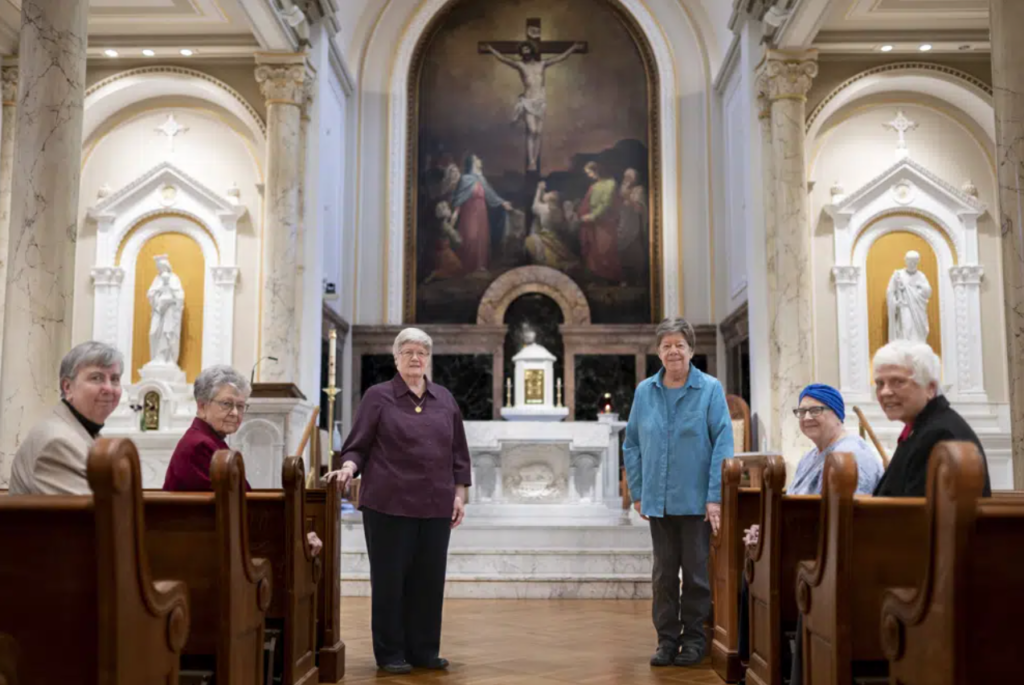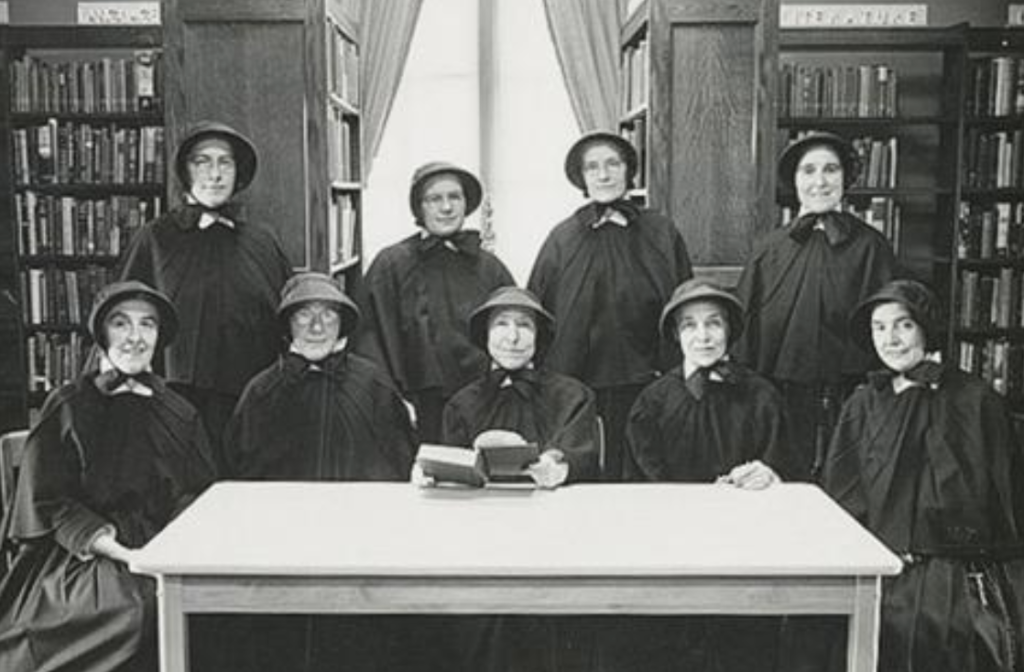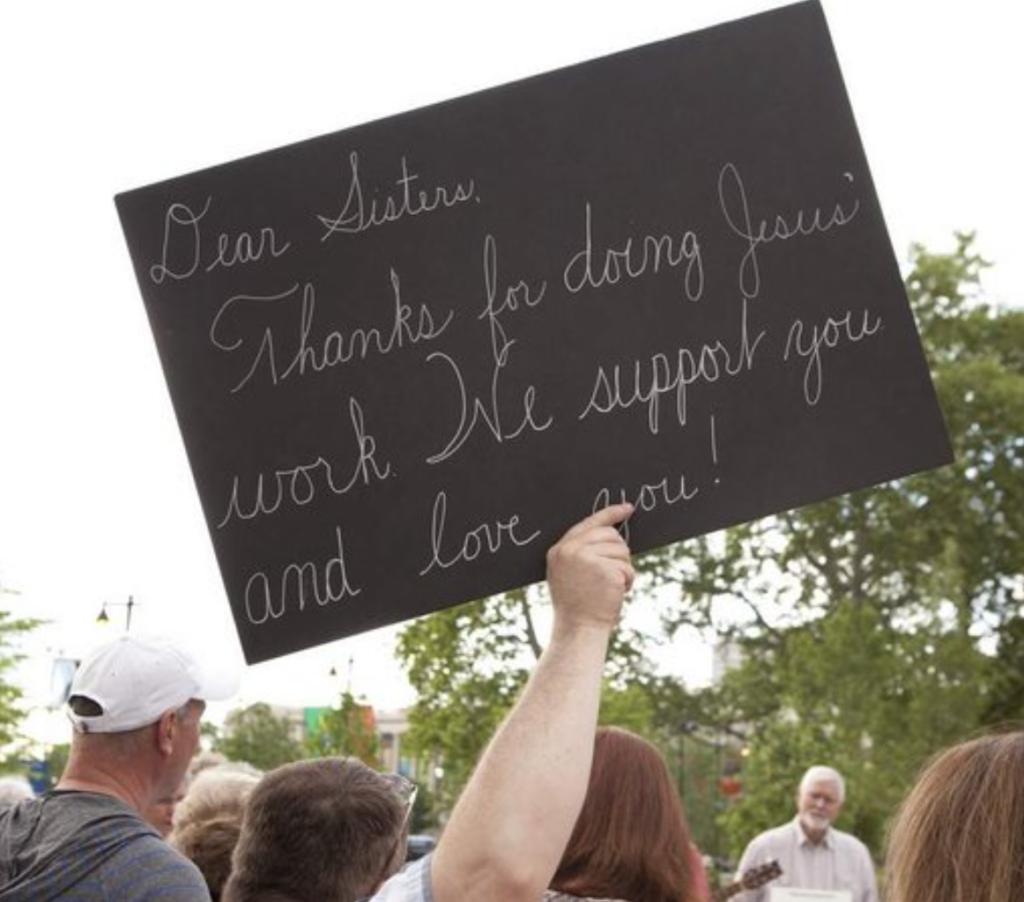Women Speaking Truth
Most people in the US reading this headline this week might think of a certain jury verdict in New York City. I think of the Sisters of Charity of St. Vincent de Paul of New York.
They announced April 27 that their congregation is on a “path to completion.” I am shocked. Everybody knows that St. Elizabeth Ann Seton formed the first US congregation of Charities in Maryland, at least everybody who went to a Charities college like mine, St. Elizabeth’s in New Jersey. But for everybody in New Jersey, New York City is the Ur location and those New York Charities with their bonnets were the real deal.
What happened? The order still has 154 sisters, but they have had no new novices in twenty years, as reported by Luis Andres Henao of the Associated Press. They “will no longer work toward finding nor accepting new members to our Congregation, in the United States.” Simple. Truthful. Facing reality.
This comment intrigues me: “However, because we believe in the future of religious life, we will continue to promote vocations, and redirect inquiries to Federation congregations and/or to the Religious Formation Conference.” The New York and New Jersey congregations are not the only Charities active in North America; there are fourteen in this Federation. Most trace their foundations more explicitly to Saint Vincent de Paul and Saint Louise de Marillac, who founded the Daughters of Charity in Paris in 1633, rather than to Bayley Seton of Emmitsburg, Maryland, in 1809.
Five of those congregations in the Federation are in the maritime provinces of Canada, which may explain their greater emphvasis on Europe. The others span the United States, scattering themselves west and south beginning in the 1810s as bishops requested their ministry. That’s what happened in New York. Then in 1846 one group incorporated there under the rule Seton adapted from the French; another group returned to Emmitsburg and affiliated with the Daughters of Charity in Paris following the original rule.
This brief foray into the history suggests that the New York congregation has as much claim to being the original American order of the Sisters of Charity as any other, so their “completion” has a certain historic significance.
The good works of the New York congregation will continue. “This is not the end of our ministries.” They have many. The Sisters share the campus of the College of Mt. St. Vincent, and operate hospitals, a housing corporation, a mission in Guatemala, and other ministries that seem very contemporary: centers for women and peacebuilding; work on human trafficking; arts and a farm; peace and justice and the integrity of creation. The leadership and staffing of these efforts is shared with others even now. Their impact will continue and grow.
In my doctoral work, I argued that this was a pattern in women’s institutional leadership. In contrast to the YMCA, the early twentieth century ladies leading the efforts of the YWCA abroad, especially, modeled the work and developed local leaders who took over. I’m not sure it’s exactly an anti-colonial model, but letting go was their style. I observed the same thing in the Medical Mission Sisters, who taught Vatican II liturgy to my small faith community and spun us off. Now I see lots of indigenous sisters in their fund-raising for their international work. I assume they have done the same in these missions.
But I digress. I also forayed into the websites of the Foundation and the fourteen Charity congregations. Only one of the others has “completed,” in Charlestown, South Carolina. Three of their outreach sites continue.
Most of the rest have a link encouraging those exploring a vocation. One gushes over two new novices. Another describes the formation program they are part of: six congregations, six continents, six age groups, at a university, not a motherhouse. Many photographs include young sisters, so the experience of no new aspirants in New York is not the norm.
What about the mission, the charism? What strikes me first is Laudato Si. These are Pope Francis Catholics, emphasizing environmental work, front and center. The original educational mission continues with schools at every level, including several colleges. Hospitals grow in complexity. The Charity charism of care for the poor seems infinite in its institutional expressions. There are missions in many countries, and most US orders operate in several states as well. A couple of the orders have a presence at the UN and others try to influence corporate boards. At least one is investigating a history of slavery and one is on the list of congregations that ran Indian schools. Questioning past decisions suggests humanity and humility.
The New York statement says, “Our mission will continue beyond our Sisters, through our Associates and partners in ministry, expanding what it means to live the charism of charity into the future.” Associates are part of all of these congregations, with more or less formal processes of affiliation. Lay women, married and single, are moved to join with women religious leaders for a familiar Catholic experience in a female space. I can see why this movement is appealing.
In that AP interview, Sister Margaret O’Brien acknowledged that “members of the Sisters of Charity in New York had hoped for more” than the possibilities for women in the Church: she “lamented that women still cannot be Catholic priests.” “Back in the ’70s, in a lot of our documents and assembly minutes, you can see the hope that we had at the time for the ordination of women,” she said. “And that’s much slower in coming … but it will come.”
Women in Roman Catholic WomenPriests and elsewhere have been ordained now. Maybe the completion of some religious orders heralds other opportunities. Telling the truth when an institution needs to change is hard. It’s easy to simply preserve.
The photos of the leadership team chosen by NCR’s Global Sisters Report and America Magazine to accompany this story illustrate that tension. In GSR, informal clothing gets emphasized as two sisters stand against a backdrop of the pews. In America, two sisters in more formal pantsuits stand in the aisle with the chapel altar as the backdrop. The four others sit in the pews.

Sisters as in America are looked to as leaders in the institution, at the same time that they are lay women, not clerics, like the other people in the pews, as in GSR. The evolution from those bonneted habits to comfortable dress lets us know that sisters are real people who have dedicated their lives to a spiritual mission as it has changed over the years. It is changing again.
I need to acknowledge how superficial this foray is. Everything from the history I have presented to the lives of the real people in these convents is more complicated than what I’ve written. I didn’t always love or admire the sisters who taught me during my sixteen years. Yet I believe that it is the sisters who built the church through the institutions they created. I want to explicitly acknowledge that.
I remember the support for the 2012 NunJustice project of the Catholic Organizations for Renewal. American religious orders were being investigated inappropriately, by the Vatican. My favorite image was a Palmer method “Thank you, Sister!” on a black poster with white lines. Someone from Dignity brought it to our witness.
I think of it because in that AP article, Sister Donna Dodge, the president of these New York Charities, remembered a St. Patrick’s Day parade. “As we passed, many of them came out and said, ‘Thank you for teaching me. Thank you for helping me in the hospital. Thank you! Thank you!’ It was the first time in my life that I’ve ever heard that from so many people at once.” I love her for continuing, “we don’t do what we do to look for thanks. We do what we do because it’s right … and it’s a Gospel mandate.” But take a victory lap, Sister. You all have earned it! That’s the truth.



One Response
A similar idea is happening to the Sisters of St. Joseph, in London and in Toronto. I wrote to one of the nuns in London, On. I had a brain haemorrhage, 1974, and I was communicating with Sr. Margaret Winter, who taught me Math and Latin in London, 1974. She was an e x c e l l e n t teacher! She died in 2012, I think. I still have the letter from one of the sisters who wrote me about her death.
She was a GOOD teacher! I was an excellent student from before I wrote to her. I was an Ontario Scholar – writing good essays and “mathematically” – I was among the BEST. How I do miss those
d a y s, however – life has had different ways for me to express my “independence”.
Life goes on, but for the people who have been influenced by the “sister/teachers”, it will have to be in diminished way. Life is always good, it just depends on “how one carries it out”.